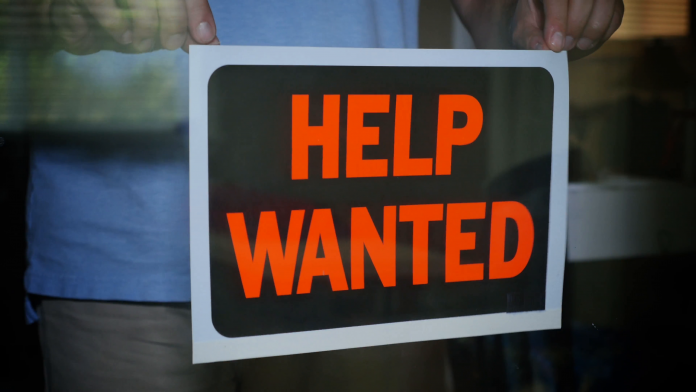The numbers are in, and it’s official:
Job growth has fallen short of expectations for the month of August. With nonfarm payrolls up only 130,000 (vs. the expected 150,000), you’d think economists would be worried.
Especially with Treasurys in a state of disarray.
And though some certainly are, others see last month’s job tally as a sign of continued strength.
“Amid the volatility of financial markets seeming to mirror the rest of the world, the U.S. job market has remained a veritable pillar of stability,” wrote Mark Hamrick, Bankrate.com’s senior economic analyst, in an email to Yahoo Finance.
“In terms of relatively stability, the upcoming August employment reading should be no exception, with the emphasis on ‘should.’ The key question is whether the U.S. economy continues to grow in the face of these headwinds.”
However, Ellen Zenter, economist at Morgan Stanley, was not as pleased. She expected a gain of 181,000 jobs for the month – a prediction that significantly overshot the actual statistic.
“Most key data on the labor market for August out so far have sent rather positive signals,” she wrote in a note to clients.
“For one, in the July survey week, initial jobless claims continued to run at low levels and there were no particular indications that the rate of hiring might have slowed markedly. Secondly, the August labor market differential reported by the Conference Board rose to a multi-year high again. Thirdly, the ADP employment report surprised to the upside with underlying strength being rather broad based. Together, these point to still healthy underlying labor market conditions.”
And while that might make perfect sense, other economists, like Wells Fargo’s Sam Bullard, predicted a much less impressive jobs report.
“Monthly job gains have slowed so far this year, yet the underlying pace is still solid enough to promote moderate GDP growth,” Bullard wrote in a note yesterday, alongside his prediction of a 135,000 monthly job gain.
“That said, the U.S. labor market is not immune to the deceleration in the pace of overall economic growth we have seen recently, and will ultimately show up in future hiring plans.”
And though August fell short of analyst estimates in terms of job gains, unemployment remained level at 3.7%.
Just as expected.
“Real unemployment”, which takes into account underemployed and discouraged workers, rose from 7.0% to 7.2%. Which, while not great, is not necessarily bad either.
Because the real unemployment rate is still at a near-historic low, supporting Mark Hamrick’s belief that the U.S. job market remains a “pillar of stability”.
And since unemployment (real or otherwise) remains level, the Fed is unlikely to take action. It’s one of their key indicators, after all, and unless Chairman Jerome Powell loses his mind, the economy is likely to be left alone for at least another month.
Meanwhile, wage growth actually beat analyst estimates, as average hourly earnings rose 0.4% (vs. an expected 0.3%). For the year, wage growth is up 3.2% (vs. an expected 3.1%).
So, while the August job gain may have left economists wanting, unemployment and wage growth did not. The numbers released this morning are unlikely to quell recession fears, but at the very least, they shouldn’t strengthen them.
At least, not if the market behaves rationally. But if we’ve learned anything at all over the last few months, it’s that sensationalism rules the headlines.
Which, in turn, drive equities.
Will investors react appropriately to today’s jobs report? Probably not. Don’t forget, they darn near priced-in a trade war victory yesterday after the U.S. and China agreed to meet in October.
But if the market can stretch out its 2-day winning streak a little further, September might end up being a great month for bulls as we await the results of a critical Q3 earnings season.







